Author Study 101: A Complete Guide to Author Study Projects

Get your students interacting with literature in a new way with an author study. This activity is an engaging way to get students to learn about author’s craft and build connections between literature and the real world. Read on for everything you need to dive into your very first author study.
I’m sure you’ve planned plenty of novel studies in your classroom, right? But have you ever thought about doing an author study with your secondary students? (If not, you totally should.) Think about the ways we traditionally introduce our students to new authors. Do you share the basic facts? Do you make a brief presentation? Or maybe you just jump right into the text at hand.
But here’s the thing—none of those have the students rolling up their sleeves and digging in. While there are several benefits to assigning an author study project (more on those in a moment), one of my favorites is that it is a student-centered activity. And that, my teacher friend, is when the magic happens. When students engage in an author study, reading literature becomes a very active experience—and isn’t that the goal?
What is an Author Study?
An author study requires students to take a deep dive into a particular author’s life and literary work, encouraging students to engage with literature in a new way. As a result, students gain a deeper understanding of the author’s craft, real-world influence, different genres, and writing techniques.
This can help students draw connections between an author and their work. However, it can also help them better understand a specific genre or literary movement. Either way, there is much room for creativity when planning an author study. However, there are three main areas of focus to consider:
- Building bridges: Analyzing and evaluating connections between the author’s life and their literary works
- Author’s craft: Examining and evaluating the author’s portfolio of work, looking closely at the author’s themes, characters, and overall writing style
- Personal reflection: Exploring and reflecting on the author’s work while making connections to one’s own life and experiences
When planning an author study assignment for your students, you can focus on one, two, or all three of these aspects. Though, if you’re looking for students to get the most out of an author study experience, I recommend pulling elements from all three into your assignment. Approaching an author study in this way will require students to think critically about the author’s work while making powerful connections to their life, the author’s life, and the world in general.
An author study works as an independent activity as well as a small-group or whole-class project. You can focus on a single author or authors from a specific genre and time period in general. You can assign the author(s) or give your students a choice. No matter how you approach an author study, this project will greatly benefit your students.
Why Do an Author Study?
Author study projects require connection, reflection, critical thought, and research. And even that’s just scratching the surface. There are many benefits to having your students take part in an author study, but I’ll highlight a few of my favorites:
- Allows for Flexibility and Differentiation: An author study is highly flexible. Therefore, you can easily adapt the specifics to meet the needs of your curriculum while also thinking about students’ needs and interests. For example:
- Are you working with students with varied reading levels? You can assign students authors and literature according to their abilities—or at least steer them toward doing so themselves.
- Are you dealing with reluctant readers or simply want to spark student interest in literature? Approach the author study as a choice project, having them select an author of interest and analyze their work.
- Are you looking to differentiate using a whole-class approach? Once you’ve chosen the author of focus, you can assign students resources and pieces of literature to review based on their reading levels.
- Are you introducing a new genre or literary movement? Give students a list of approved authors and let them explore the genre or movement through that particular author’s work.
- Strengthens Critical Thinking Skills: Students must exercise their critical thinking skills at every phase of an author study. As students learn more about an author’s life, they have to consider the implications the author’s life had for their writing. In what ways is their work a mirror of their life experience? Perspective? Time period? How does their work reveal the author’s commentary on literature and life?
When looking at the text, students are constantly analyzing the author’s work, closely considering the author’s craft and unpacking the messages written between the lines. Students must also reflect upon the author’s work in a personal way informed by text-to-world and text-to-self connections. All of this involves making inferences , synthesizing information, and drawing conclusions.
- Improves Student Writing: An author study involves a lot of research and reading. However, it’s also a great opportunity for students to improve their own writing toolbox. Instead of you being the writing teacher, the author takes on that role. As students work through an author study, their chosen author serves as a mentor in writing. As they work through various texts by said author, students will pick up on wiring elements like word choice, structure, figurative language, and overall writing style.
You can have students identify and analyze specific literary elements they’ve learned in class. You can even have them write their own piece mimicking the author’s style. Either way, students are sure to pick up on the author’s go-to writing tools and moves and analyze them for effect.
- Deepens Understanding of (and Appreciation for) Literature: Most ELA teachers have a deep understanding of and appreciation for literature. However, the same isn’t always true for our students. In fact, it’s often quite the opposite. Most students are used to a cycle of being introduced to a new text, then reading it before having to write about it. An author study breaks that cycle by encouraging students to take a deep dive into a single author and their literary contributions.
This approach helps to slow down how students process literature. Students must think deeply and critically about the role literature plays in our life. Sometimes it serves as a reflection of personal experiences or beliefs. Other times it’s a reflection of a certain place and time. This realization can change the way students perceive literature moving forward.
More Benefits of an Author Study
- Exposes students to different literary voices, genres, and styles. This is a great way to encourage them to learn about a new literary movement or genre. As students share their findings, they can identify defining characteristics of a specific movement or genre. They can also compare and contrast genres, literary movements, and writing styles.
- Utilizes information literacy skills. You can’t complete an author study without conducting research and synthesizing your findings across several pieces of an author’s writing. Therefore, an author study provides an opportunity to teach or review 21st-century information literacy skills.
- Encourages Connection-Making. Some students struggle to make connections with literature . An author study encourages students to find text-to-text, text-to-self, text-to-world, and text-to-author’s life. Okay, I made up that last term, but you get the point.
- Establishes Cross-Curricular Connections. As students learn about an author’s life, it’s a great way to make connections to history. With an author study, students can pay close attention to the historical implications of an author’s work.
How to Do an Author Study: Step-by-Step
While there is flexibility in the details, an author study typically flows as follows:
- Choose an author
- Research the author using biographies, autobiographies, articles, author websites, etc.
- Choose [X] of their literary works
- Read, annotate, and analyze the literature
- Complete cumulative assignment
However, you have to do a little planning before students can dive in. Follow the steps below to help you plan an author study perfect for your classroom.
- Set a purpose, goals, and desired outcomes for the author study. Start by asking yourself: What is the purpose of your author study? Is it to introduce a new author, genre, or literary movement? Is it about researching and synthesizing information? Is it to get students interacting with literature in a new way?
Then, think about what you want your students’ takeaways and deliverables to be. Determining a purpose, goals, and desired outcomes will help you create an author study that’s just right for your students.
- Establish the guidelines and deliverables. Author studies hold a lot of potential—and there are various ways to reap the benefits. Once you determine the purpose, goals, and desired outcomes, consider the specific guidelines students will follow and the deliverables they will produce along the way. Keep your cumulating project in mind, helping you select formative assignments that will be useful to students as they create their final project.
How many works of literature do students need to explore? What guiding or essential questions do they need to answer? How will they organize their research, connections, analysis, and reflections along the way? For example, perhaps you require students to create an annotated bibliography, annotate three pieces of literature by their author, or answer guiding questions.
- Determine a culminating project. As you are thinking about the guidelines and deliverables, there is one deliverable to pay extra attention to—the cumulating project. Again, return to your purpose, goals, and outcomes. Keeping those in mind, determine a culminating project that highlights learning goals while showcasing what students have learned about their author in a creative way.
Consider the following projects and assessments to wrap up your author study:
- Author On-Pager. These one-page assignments require students to think critically and creatively when presenting their findings.
- Write an Author Feature Article. Have students write a theme-based feature article to highlight their author’s life and literary contributions.
- Create a Collaborative Poster . Students must work in groups to research their author and display their findings in poster form including a mix of written and visual elements.
- “In the Style of…” Writing Assignment. Have students write their own short story or portfolio of poems inspired by their chosen author’s writing style and common topics or themes.
- Annotations All Around. Short on time or looking for a more informal assessment? Have students turn in an annotated bibliography to reflect their research along with annotations analyzing their author’s literary works.
- Choose an author. The next step is to choose an author, or at least determine how you want your students to choose their author. If you are doing an author study as a whole class, you might choose to focus on the author of the next novel you are reading. Alternatively, you may choose a popular author of the genre or literary movement you are learning about. However, if you are giving our students a choice over which author to study, I suggest providing a list of pre-approved authors for them to work from.
Something to consider: Authors who publish shorter works (poems, short stories, etc.) make this project more accessible for students if you’re asking them to explore various works by their author.
- Review information literacy skills. The final step before setting your students free to complete the author study is to review information literacy skills. While today’s students are tech-savvy, it never hurts to remind them of essential research skills. Create a mini-lesson to review these essential research skills including how to vet and find credible sources and how to properly source their research.
However, keep in mind that this project is more than a research project. It’s a true inquiry project where, yes, students are researching an author. But they are also using that research to inform their critical analysis of the author’s literary works. Some students can get caught up in the research rabbit hole, so it’s important to make it clear why students are researching their author and how it ties into the overall project goals.
The Best Author Study Questions
Completing an author study can feel overwhelming at first. There is so much information to consider and conclusions to draw Oftentimes, students simply don’t know where to start. Providing guiding questions for students to answer along the way can help them stay on track and get the most from this experience.
Essential Questions to Consider
- How does an author’s background and life experience influence their writing?
- How do authors use specific techniques to present similar themes and messages across multiple works?
- How does analyzing multiple works by an author deepen your understanding of each individual piece?
- How does analyzing multiple works by an author help to understand their voice, style, and narrative focus?
The Best Questions for Author Inquiry and Literary Analysis
- What is the author’s cultural and personal background?
- Were there any significant moments (historical or personal) that influenced the author’s life?
- What about this author’s background qualifies him or her to write about [INSERT TOPIC HERE]?
- How does the author’s literature reveal or reflect aspects of their personal life?
- How does the author weave in their own experiences, values, or beliefs into their work?
- Who are the author’s literary influences?
- During which time and place did the author live?
- How does the author’s work reflect the characteristics of literature for the time period and/or literary movement?
- What does the literary work reveal about society and history at the time?
- Which topics, themes, or messages appear across multiple works by the author?
- What do these recurring topics and themes reveal about the author?
Author Study Suggestions and Examples
Whether you’re looking to assign an author to your students or letting them choose, there are some authors that make for better author studies than others. Again, it comes down to the availability of information about the author and the collection of their published work. If you’re not sure where to begin, get a head start by reviewing with the authors listed below.
Authors for a Middle-Grade Author Study
- Jacqueline Woodson
- Gary Paulsen
- Tim Federle
- Grace Lin
- Sherman Alexie
- Gary Soto
- Lois Lowry
- Robert Frost
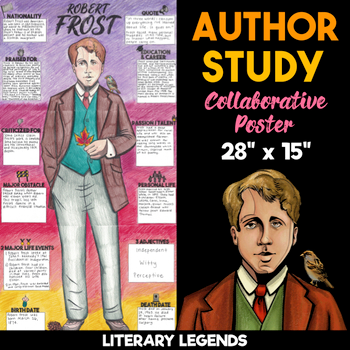

Authors for a High School Author Study
- F.Scott Fitzgerald
- William Shakespeare
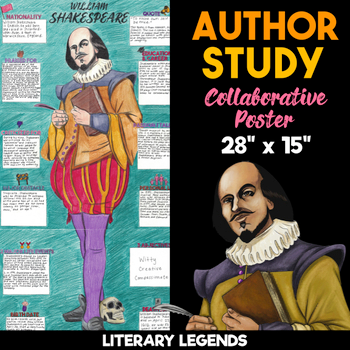
- Edgar Allan Poe
- Emily Dickinson
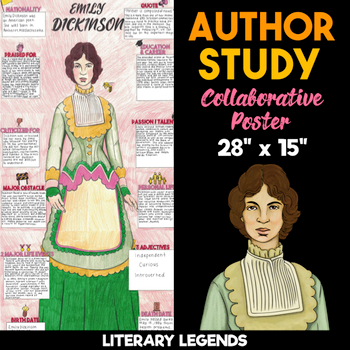
- Ray Bradbury
- Laurie Halse Anderson
- George Orwell

- Shirley Jackson
- Maya Angelou
- Langston Hughes

- Toni Morrison
- John Updike
- Harper Lee
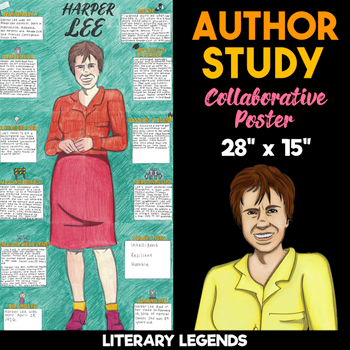
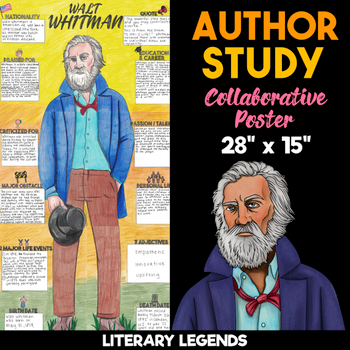

Time to Get to (Author) Studying!
An author study is a great opportunity to get students diving into literature through an inquiry experience. Rather than introducing authors, genres, or literary movements with a teacher-led lecture, an author study takes a student-centered approach. Thanks to this project’s flexibility, there are ways to adapt your requirements and resources to all of your student’s needs. However, regardless of how you structure your author study project, students will be inspired to think creatively and critically while gaining a new understanding of (and, dare I say, appreciation for) literature.
Once you determine the foundational elements of your author study project, choose an author (or compile a list of options for students to choose from), and provide a few guidelines and guiding questions, it’s time for students to dive in and get to work!











